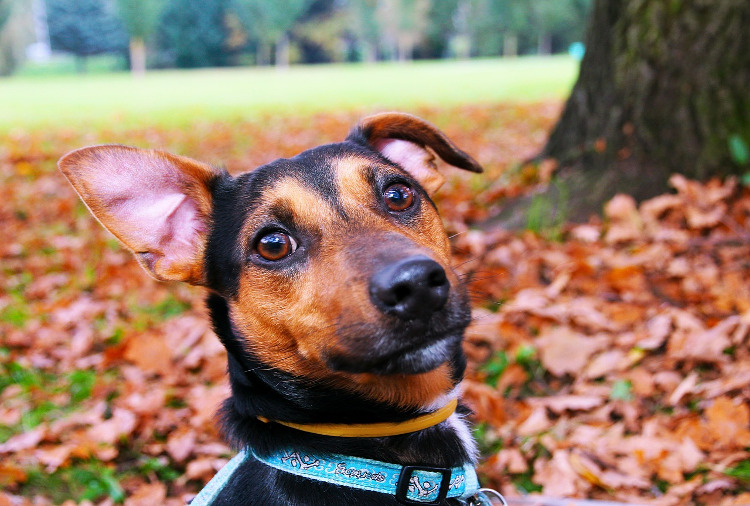![]()
Your dog isn’t exactly a big fan of having their ears inspected and cleaned, so when doing so, do your best to work with your pooch to make the experience as positive as possible. Their ears are sensitive so regular and careful dog ear care will help to prevent and detect any ear problems. If not done properly, however, it may lead to ear problems and sensitivity.
Infection Check
Once a week is best to check your dog’s ears for signs of irritation, infection, dirt, sensitivity, and parasites such as ear mites. You want to look for redness, discharge, dirt, or waxy buildup. It is important to routinely look at your dog’s ears and inspect them so you are familiar with how the ears appear in good health. If there is a change in how the ears look or how your pet reacts to ear examination, this may indicate a need to investigate further i.e. a vet exam.
Signs of infection:
- Swelling or inflammation (ears are hot to the touch)
- Redness or crusting of skin of the ear flap
- Off-colour discharge (yellowish or reddish-brown)
- Foul odor
- Discomfort or pain when ears are touched
- Itchy ears
Always see your veterinarian if an infection or discomfort is suspected, as any issue left undiagnosed can lead to progression of symptoms and potential long-term problems. Usually, ear problems in dogs are present due to an underlying cause such as ear conformation, allergies, and parasites etc., which need to be corrected so that the ear problem does not reappear.
Never attempt to treat your dog’s ears yourself! This is true, even if your pet has had an ear treatment from the vet previously and you have some of that ear medication sitting in the medicine cabinet in your house.
How often should you inspect and clean your dog’s ears?
The frequency of ear cleaning needed is quite different from the need to inspect your dog’s ears. While it is a good idea to keep on top of monitoring your dog’s ears weekly, healthy ears typically do not need to be cleaned any more than once a month. If your groomer cleans your dog’s ears, that should also be taken in to account. As a rule of thumb, a routine ear clean should not be needed any more than once every 1 to 2 months for a dog with healthy, normal ears. If more frequent cleaning is required, this should indicate cause for concern.
Besides timed routine ear cleanings, it is a good idea to pursue ear cleaning for your pet after each bath or after water activities like swimming, playing by the beach or lake. This helps clean out the ears in case if there has been an introduction of excessive moisture into the ear canals during the bath or playtime.
Be sure not to over clean your dog’s ears, as it can upset the natural flora balance of the ears and can lead to infections.
Ear Cleaning Tools
First things first, as with humans, never use Q-tips or similar cotton-tipped applicators for your dog’s ears! As we all know, they can push debris and wax further down the ear canal and cause potential damage. It’s best to use cotton balls or your finger wrapped in soft gauze as the only objects going into your dog’s ears.
Use an ear rinse that is safe to use for a dog (when in doubt, ask your vet) that has no antibiotics, steroids, alcohol, or toxic materials. You can usually purchase a rinse from your vet clinic or local pet store.
Good hygiene is vital! Wash your hands thoroughly before starting the ear cleaning, as well as after finishing the job at hand. This way, you will not be introducing bugs to the ears or collecting bugs on to your fingernails from the cleaning. You may wear gloves for the procedure if you prefer.
Cleaning Technique
In preparation, offer treats, toys, and belly rubs with soothing words to help your dog relax. It helps to choose a calm and relaxed moment when your dog is either tired or lazy and when you have adequate time to do the procedure. Thus, it is best not to do the cleaning when you do not have adequate time and patience.
It’s best to do this in the bathroom or mudroom of the house (a.k.a. where you take your shoes off), because it may be messy depending on how keen your pooch is for his ears to be cleaned. Since dogs may not particularly like having their ears cleaned, you need to try and make the experience as positive as possible. Make sure all your supplies are close by so that you aren’t disrupting the flow of things during the ear clean.
There are two commonly used ear-cleaning techniques:
- The first is to wet a cotton ball or gauzed finger with ear rinse and wipe the outer flap of the ear including the ear folds. Use a new cotton ball or fresh gauze for the ear canal, start outside and work your way in, as long as pup is comfortable — be cautious to not cause any harm by going too deep or being too aggressive with your finger in the ear canal. Repeat with another gauze or cotton ball to clear out any remaining wax or debris.
- The second method is to place a small amount of ear cleaning solution in your dog’s ears, massage the base of their ears and let them shake their head to help loosen any debris inside the ear. Place a cotton ball or gauzed finger in the ear canal to gently wipe out the inside of the ear canal. Repeat one more time for a thorough clean. Try to work from the inside out using a fresh cotton ball each time until it comes out clean. Gently wipe clean the ear flap and the ear folds at the end.
Once you’ve finished cleaning their ears, spoil your dog with more treats, rubs, cuddles, and soothing words. Positive reinforcement goes a long way in ensuring that your pooch will be ready and willing for the next ear clean.
If you’re too nervous to clean your dog’s ears yourself, bring them to your veterinarian or your dog groomer.
Creative Commons Attribution: Permission is granted to repost this article in its entirety with credit to VetDERM Clinic and a clickable link back to this page.

Dr. Jangi Bajwa is a Board certified veterinary dermatologist at VetDERM Clinic in Surrey BC. He is also the dermatology feature editor for Canadian Veterinary Journal. Dr. Bajwa’s special interests include otitis and allergic disease in pets; as well as helping improve quality of life of pets and their families.



 by
by